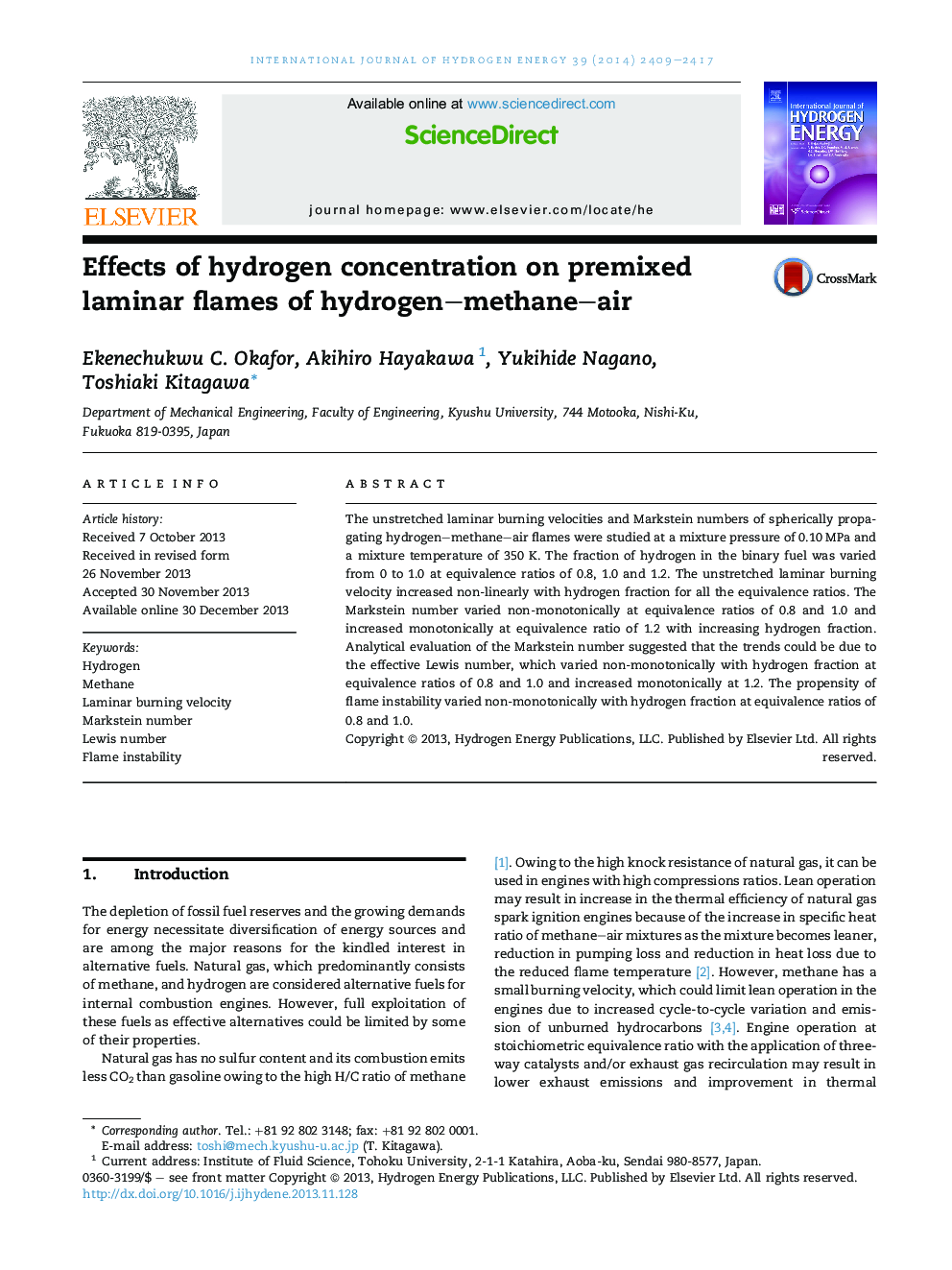| Article ID | Journal | Published Year | Pages | File Type |
|---|---|---|---|---|
| 7720934 | International Journal of Hydrogen Energy | 2014 | 9 Pages |
Abstract
The unstretched laminar burning velocities and Markstein numbers of spherically propagating hydrogen-methane-air flames were studied at a mixture pressure of 0.10Â MPa and a mixture temperature of 350Â K. The fraction of hydrogen in the binary fuel was varied from 0 to 1.0 at equivalence ratios of 0.8, 1.0 and 1.2. The unstretched laminar burning velocity increased non-linearly with hydrogen fraction for all the equivalence ratios. The Markstein number varied non-monotonically at equivalence ratios of 0.8 and 1.0 and increased monotonically at equivalence ratio of 1.2 with increasing hydrogen fraction. Analytical evaluation of the Markstein number suggested that the trends could be due to the effective Lewis number, which varied non-monotonically with hydrogen fraction at equivalence ratios of 0.8 and 1.0 and increased monotonically at 1.2. The propensity of flame instability varied non-monotonically with hydrogen fraction at equivalence ratios of 0.8 and 1.0.
Related Topics
Physical Sciences and Engineering
Chemistry
Electrochemistry
Authors
Ekenechukwu C. Okafor, Akihiro Hayakawa, Yukihide Nagano, Toshiaki Kitagawa,
